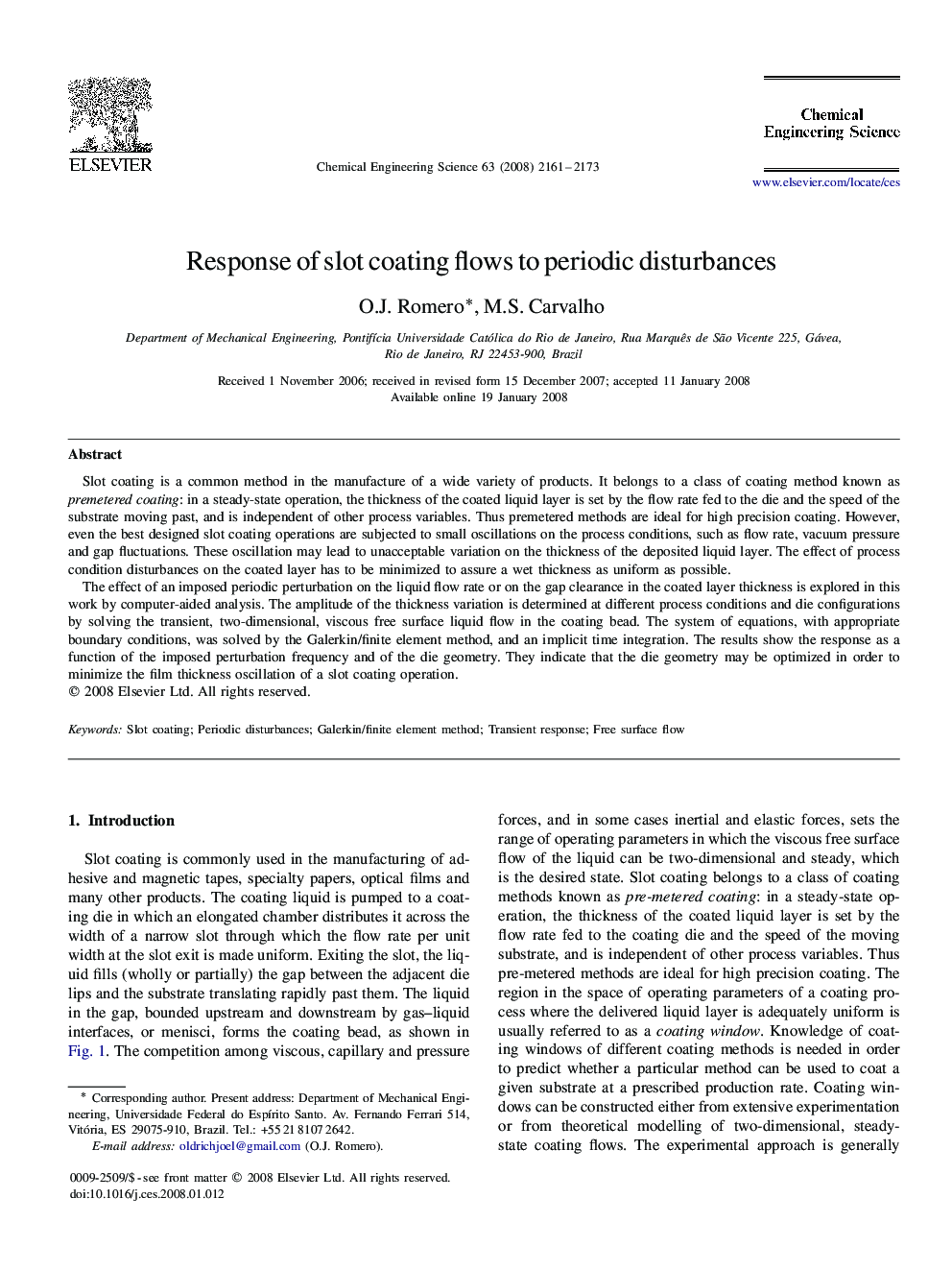| Article ID | Journal | Published Year | Pages | File Type |
|---|---|---|---|---|
| 157884 | Chemical Engineering Science | 2008 | 13 Pages |
Slot coating is a common method in the manufacture of a wide variety of products. It belongs to a class of coating method known as premetered coating: in a steady-state operation, the thickness of the coated liquid layer is set by the flow rate fed to the die and the speed of the substrate moving past, and is independent of other process variables. Thus premetered methods are ideal for high precision coating. However, even the best designed slot coating operations are subjected to small oscillations on the process conditions, such as flow rate, vacuum pressure and gap fluctuations. These oscillation may lead to unacceptable variation on the thickness of the deposited liquid layer. The effect of process condition disturbances on the coated layer has to be minimized to assure a wet thickness as uniform as possible.The effect of an imposed periodic perturbation on the liquid flow rate or on the gap clearance in the coated layer thickness is explored in this work by computer-aided analysis. The amplitude of the thickness variation is determined at different process conditions and die configurations by solving the transient, two-dimensional, viscous free surface liquid flow in the coating bead. The system of equations, with appropriate boundary conditions, was solved by the Galerkin/finite element method, and an implicit time integration. The results show the response as a function of the imposed perturbation frequency and of the die geometry. They indicate that the die geometry may be optimized in order to minimize the film thickness oscillation of a slot coating operation.
